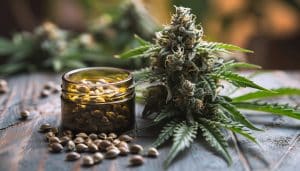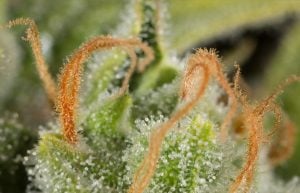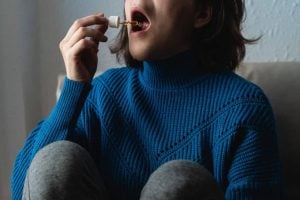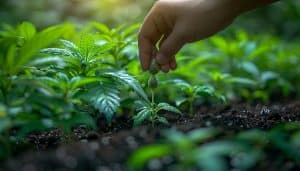- You may not yet know Septoriasis, which is a fungal disease that appears in the leaves of cannabis plants. These become yellow as for a nutrient deficiency, which is misleading …
- This harmful scourge is also called Septoria, it prioritizes the lower ramifications of the plant and it is more present in the crops made outdoors.
- However, it is a phenomenon that does not lead the loss of plants most of the time, however, Septoria can seriously reduce the total production of high -quality resinous heads, which ultimately corresponds to the long -awaited harvest.
- During this article, we explain to you what the Septoria is in detail, how to identify the different symptoms on the cannabis plant, what are the conditions promoting its appearance, and especially what to do to eliminate the latter from our Marijuana culture.
- What is Septoria?
- What are the symptoms of septoria?
- What are the conditions promoting the appearance of septoria?
- How to eliminate the septoria in the cultivation of cannabis?
WHAT IS SEPTORIA?
There septoriasis, which also bears the name of Septoria of leaves, is a fungus of the family of Mycosphaerellaceae which frequently attacks cannabis plants during crops made outdoors. It is a type of mold which most often occurs under a climate whose temperature is generally high, as is the humidity rate corresponding to this area of the globe.
It is a cryptogamic disease that can be caused by about a thousand different parasitic mushrooms. In fact, two different strains were clearly identified as responsible for the disease, these are fungal diseases called Septoria cannabis And Septoria Neocannabina.
WHAT ARE THE SYMPTOMS OF SEPTORIA?
Symptoms of Septoriosis always appear on the leaves of the ramifications located on the lower part of the plants, during growth or flowering. We then observe the gradual development of Brown necrotic circular spots, which are bordered by yellow lesions on the surface of the leaves.
These spots may have an appearance dark and present as an outgrowth located in their center, like a little button, but one of their particular characteristic is that they have a majority fairly similar diameter. Thanks to the point located in the center of each task, the spores can be fixed on this part as a target, in order to precisely make development possible as the reproduction of this fungal rot.
As time passes, the stains dry and the vegetable tissue of the leaves crack, leaving room for an orifice similar to the imprint of a bullet which would have crossed this surface. Which is completely normal, because this perfectly reflects the chronology of the development of the disease, because little by little the veins of the leaves used for the vital irrigation of the latter, are strongly degraded and this ultimately leads to the blocking of vital resources (sap containing water and nutrients).
If the infection level of this fungus is high, then you can observe the leaves curved, withered, die, then they will eventually fall and litter on the ground. We will therefore witness a certain defoliation of the lower part of cannabis plants. As we mentioned above, this type of fungi first attacks the lower leaves, however, it is possible that the leaves of the upper part of the canopy are also affected during flowering, as it is exactly the Same thing about the stems and even the cotyledons of each plant.
WHAT ARE THE CONDITIONS PROMOTING THE APPEARANCE OF SEPTORIA?
Septoriasis generally appears in outdoor crops during hot summer days, especially following high water abundant precipitation. As we cannot control the duration of an episode of rain, if it is long and intense, it is then logical that this large quantity of cumulative water gives rise to a high humidity in the air. Another different cause, which could generate the arrival of this fungus is a deficiency of nitrogen at the level of the substrate.
We must be wary of the action of spores in time, because the latter can remain in sleep (latency) In the soil or substrate during the winter, and once the conditions become more favorable during the summer season, they will colonize the leaves of their new host in order to create a new colony, in order to spread the spread to the maximum of these molds.
HOW TO ELIMINATE THE SEPTORIA IN THE CULTIVATION OF CANNABIS?
To make disappear the septoriap of your cannabis culture, it is necessary to remove and throw in a recycling center, All yellow leaves demonstrating advanced symptoms From this mold, in order to isolate the spores as soon as possible, in order that these mushrooms do not last over time within your cultures. Pay attention to the leaves that litter on the ground or the substrate, because when you sprinkle, you could spread spores on it and diffuse them in depth to the roots.
Remember to cut the structure like the leaves of your plants, in order to significantly improve the air renewal inside the plant, and thus avoid an accumulation of humidity which allows the arrival of Different fungal diseases such as botrytis, mildew, fusarium, alternia, powdery mildew etc. If your culture undergoes an infection through the disease such as septoriasis, then try to maintain a constant humidity rate close to 50%.
You will have understood that these parasitic mushrooms can cause many problems at the heart of your favorite cultures, and the major problem that could arise during the presence of septoriosis, is the blocking of the vital resources of the plants, which is done through the Xylème. As we have already mentioned during other different articles on these cryptogamic diseases, most often this mold occurs because the immune defenses of the plant are clearly defaulting, which constitutes easy access to this type of rot.
It is for this same reason that it is fundamental to bring the right quantity necessary water, of nutrients, air and light, in order to avoid this problem and to consider optimal development of plants in our cannabis cultivation. Also think that this same problem can generate others in a associated manner, as this could facilitate the presence and invasion of a multitude of parasitic insects.
Even if a treatment using a product like Neem oil, is an excellent way to solve this problem for all cultivators, it is not always a miracle treatment, which offers the possibility of coming at the end of all these parasitic insects. In one way or another, it will make us waste time, maybe plants at the same time and therefore part of the harvest.
This could even cause a deficiency in your stock of heads for the current year, so it is better to prevent than cure. Also give great vigilance when flowering your cannabis plants, not to have a excess of ambient humidity (above 55-60%), because otherwise it increases the chances of seeing a Mushroom like Botrytis. The latter is quite common in the cultivation of cannabis, this is why he could easily make his next arrival. A stable temperature in an indoor culture is also a crucial thing, to rule out all problems related to mold.
Be careful during your watering in your indoor or outdoor culture, it doesn’t matter, trying not to soak the entire plant too abundantly (leaves, stems, heads), because a strong accumulation of water or a strong excess of humidity at the heart of the structure of the cannabis plants, would lead to a potentially high risk of seeing the rot of this fungus appear as many other problems, such as, for example, the propagation of spores on other parts of the plant at the same time.
Consider using a Good quality root stimulator, up to one application per week, in order to maintain healthy roots And vigorous, whose absorption capacity will be optimal in the soil. Be quiet, if you want to produce seeds for yourself, because this fungus does not directly transmit the disease to the “seeds”.
A good way to be able to anticipate many parasitic mushrooms such as septoria, is to start with Carefully select the different varieties of the best quality cannabis seeds you are going to buy When making your different cannabis cultures. It is necessary to do this, to choose varieties that are resistant to humidity related problems that we present here, during growth and especially during flowering, in order to ensure the viability of our abundant production of high quality cannabis heads.
The use of mulching is also an excellent idea in cultivating cannabis outdoors, as it offers the possibility of partially avoiding the propagation of spores In the ground, therefore protecting the latter from the diffusion of the rot, and at the same time, it is an excellent insulation of the soil to counter a high summer temperature, while limiting the phenomenon water evaporation at the same time.
This ultimately promotes the protection of microbial life of the soil, by effectively limiting water stress. To move your culture place from one year to the next, can also make it possible to avoid installing this fungus in the soil, as many problems for cultivators at the same time.
It is important to achieve at least one Prevention treatment, using a Fungicidal product with broad spectrum At the end of the growth period, in order to avoid seeing the characteristic stains of this fungus on your cannabis plants during flowering, and to consider more important problems such as the loss of part of the heads. resin of your harvest. You can also apply a Neem oil treatment, using a fairly low dosage.
The addition or mixture of beneficial mushrooms (antagonists) to your soil, soil or substrate mixture, as Trichoderma harzanium for example, or beneficial bacteria such as Bacillus pumis, is a very good action to be carried out to clean up this fungal attack.




